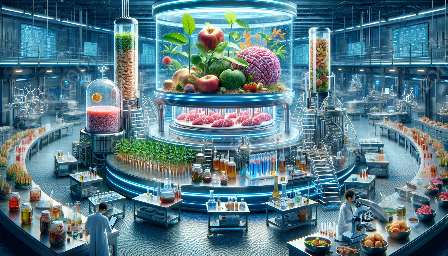The bioremediation of mycotoxins in the food processing industry is a complex yet crucial aspect of ensuring food safety and quality. Mycotoxins are toxic compounds produced by certain molds that can contaminate various food products, posing serious health risks to consumers. In this topic cluster, we'll delve into the fascinating world of bioremediation, exploring its applications in the context of food processing and food biotechnology. We'll cover the mechanisms of mycotoxin contamination, the potential health hazards, and the innovative techniques and technologies employed in bioremediation to neutralize mycotoxins and ensure the production of safe and high-quality food.
Mycotoxins in Food Processing Industry
Mycotoxins are secondary metabolites produced by molds belonging to the genera Aspergillus, Fusarium, Penicillium, and others. These toxic compounds can contaminate a wide range of food products, including grains, nuts, spices, and dried fruits. Common mycotoxins such as aflatoxins, ochratoxin A, and fumonisins have been associated with various health problems, including liver damage, immune suppression, and cancer. The presence of mycotoxins in food poses a significant challenge for the food processing industry, as it can lead to food spoilage, economic losses, and threat to public health.
Bioremediation and Its Role in Food Safety
Bioremediation involves the use of living organisms or their byproducts to degrade, detoxify, or remove environmental contaminants. In the context of mycotoxin contamination in the food processing industry, bioremediation offers a sustainable and environmentally friendly approach to mitigate the presence of mycotoxins in food products. Various microorganisms and enzymes have been investigated for their ability to biodegrade mycotoxins, paving the way for the development of innovative bioremediation strategies.
Bioremediation Techniques
Several bioremediation techniques have been explored for their effectiveness in degrading mycotoxins in food products. These techniques include microbial biodegradation, enzymatic detoxification, and biocontrol using competitive non-toxigenic strains of fungi. Microorganisms such as bacteria, yeast, and filamentous fungi have shown promising potential in the biodegradation of mycotoxins, offering a natural and sustainable solution to mycotoxin contamination.
Food Biotechnology and Contaminant Mitigation
Food biotechnology plays a significant role in mitigating contaminants in the food processing industry, including mycotoxins. By leveraging biotechnological tools, such as genetic engineering, metabolic engineering, and bioprocess optimization, researchers and food technologists are developing innovative approaches to reduce mycotoxin levels in food products. These advancements in food biotechnology hold immense promise for improving food safety and enhancing the quality of food products.
Future Directions and Sustainability
As the demand for safe and sustainable food production continues to grow, the role of bioremediation and food biotechnology in addressing mycotoxin contamination becomes increasingly important. Future research directions may involve the exploration of novel bioremediation techniques, the characterization of microbial consortia for mycotoxin degradation, and the integration of biotechnological strategies into food processing practices. By embracing these advancements, the food industry can contribute to a healthier and more sustainable food supply chain.
Innovation and Collaboration
The bioremediation of mycotoxins in the food processing industry represents a dynamic and interdisciplinary field that requires collaboration between microbiologists, biotechnologists, food scientists, and environmental engineers. By fostering innovation and knowledge exchange, the industry can continue to advance bioremediation strategies and promote a safer and more resilient food production system.
Conclusion
In conclusion, the bioremediation of mycotoxins in the food processing industry is an essential area of research and technological development aimed at ensuring food safety, quality, and sustainability. By understanding the mechanisms of mycotoxin contamination, exploring bioremediation techniques, and embracing food biotechnology, the industry can effectively mitigate mycotoxin-related risks and contribute to a healthier food supply chain. Through ongoing innovation and collaboration, the field of bioremediation continues to evolve, offering a promising outlook for the future of food safety and environmental stewardship.

